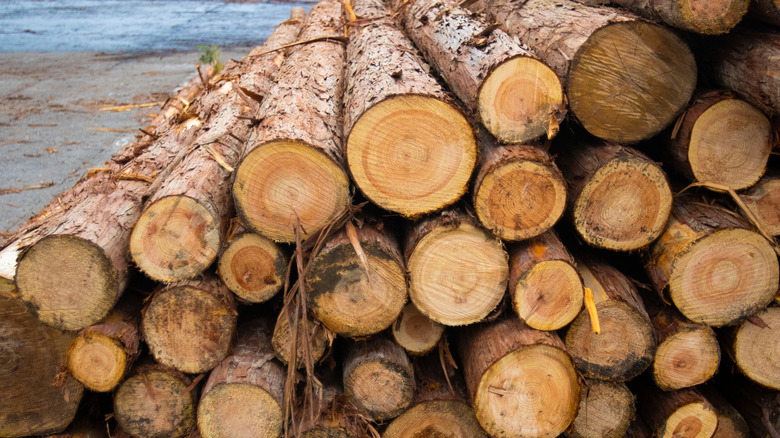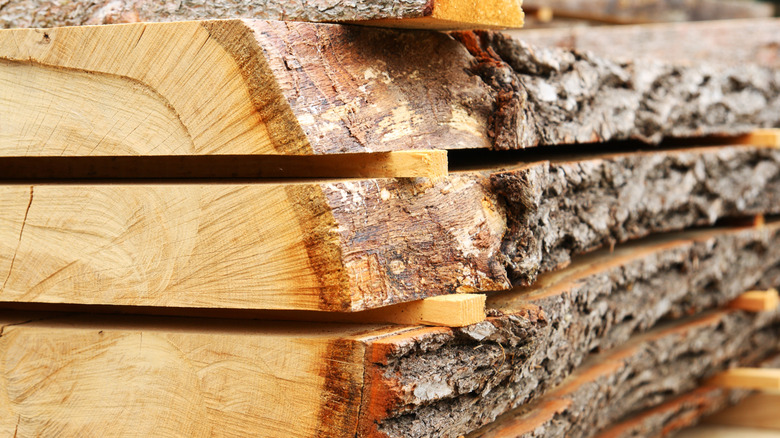Cut Cedar Trees Into Quality Lumber With These Essential Tips
If you have a couple of cedar trees in your yard that need to come down, why let them go to waste once they're out of the ground? Instead, you can easily transform these simple logs into quality pieces of lumber. Cedar wood is an excellent option for a number of creative DIY projects, ranging from outdoor furniture to picket fencing and even home siding. With the right milling technique, fallen or felled lumber can quickly become a viable source of wood for your various home renovation projects, providing a long-lasting and versatile material crafted right in your backyard.
The process of turning your cedar trees into quality lumber starts with properly cutting down your trees and preparing the logs for milling. To start, you'll want to remove any loose or dead branches from the tree, as these can fall during the cutting process and injure you. Safely using your chainsaw, cut an incision about 5 inches deep into one side of the tree. A few inches above that mark, hold your chainsaw at an angle to create a large notch in the side of your tree. It should create a V-shape when you remove the carved piece of wood. On the other side, hold your chainsaw level and begin to cut through the tree. At this stage, you'll notice the tree begin to fall in the direction of your notch. Ensure that you are a safe distance away from the tree as it begins to fall. You should also remove anything that may be damaged in the process of cutting down your tree. Remove any remaining limbs, saving those pieces for additional woodworking projects or a bit of firewood.
Proper milling and drying techniques for cedar
Milling your cedar logs properly will ensure that you get quality lumber out of your trees with minimal waste. If you aren't confident in your skills with specialized machinery, you can take your logs to a local mill to be processed or hire a freelance woodworker who should also have access to the right set of tools. Without a home sawmill, you will need to use the right chainsaw for your yard work and two types of accessories: a miniature edger or a rail system. The latter creates a guide using a number of metal rails that ensure a level cut, transforming simple logs into large wooden planks. The rail is mounted directly onto your log and holds your chainsaw horizontally for the perfect cut. If you decide to use the miniature edger as the more compact option, you will need a straight wooden board to use as a guide for your chainsaw. It is mounted to both the chainsaw and the log, allowing you to position the chainsaw vertically on each log. Both tools allow for increased stability as you cut your logs and ensure that each log is cut to an even width.
It is also important to completely dry out your planks before attempting to use them in any projects. You can do this by either using a professional kiln or with an air-drying method. To air dry your cedar planks, create a base using 4-by-4s that will keep them off the ground. Add spacers (called stickers) or small pieces of wood between each plank to prevent them from staining. Finally, seal the ends of your planks and cover them to protect them from the elements. This process can take several months to a year in order to fully dry out your planks, and it might be best to use a kiln if available.
Benefits of cedar wood for home projects
Cedar is an excellent option for DIY home projects, whether you're repaneling the exterior of your home or building a few pieces of backyard furniture. Not only does the wood look stunning, but it also comes with a surprising number of practical interior and exterior benefits. For starters, cedar wood is known for its durability, able to withstand extreme weather conditions with little damage to its surface. It is resistant to shrinking, decaying, and warping, making it an excellent option for outdoor pieces that might require the additional strength. The oil in cedar wood also acts as a natural insect repellent, which can help with backyard spaces that are prone to bugs, like garden beds, decks, and fences. On the interior of the home, cedar wood helps create an environment that is relatively soundproof as it has the natural ability to absorb sound. Regardless of the intended use, cedar wood brings a host of benefits to your home that is relatively unmatched by other wood types.
There is certainly no shortage of ways to incorporate cedar wood into your indoor and outdoor spaces; it just requires a bit of creativity. It is a go-to lumber choice for picket fencing, creating the perfect barrier between neighbors or to fence in a small home garden. With a few planks of cedar wood, you can DIY your own outdoor chair to rival anything you might find at a big box store, ranging from a simple lounger to a uniform patio furniture set. If you're looking for a few interior ideas, why not create a stunning accent wall out of cedar planks or build some customized storage shelves to house your various clutter?


